8point8: A conference on entrepreneurship for 8.8 million Australians in the regions
What innovation and entrepreneurship opportunities exist for the 8.8 million Australians living in regional Australia?
This was a challenge put forward by the 8point8 conference held in Wagga Wagga, NSW in August 2018. The 2-day conference focused on bringing together local government councils, business chambers, universities, government bodies, co-working space entrepreneurs, and other innovation ecosystem leaders from around Australia to share and learn how to best support regional entrepreneurial activity.
My personal interest in the conference is part of research into understanding the role of innovation hubs in building resilience in regional communities. My journey started on this path managing an innovation hub in Ipswich, Queensland. I then attended the inaugural EShip summit at Kansas City’s Kauffman Foundation which brought together 400 innovation ecosystem leaders. This was quickly followed by the AusPost Regional Pitchfest in Wagga Wagga which brought activators from across Australia to better understand what is needed for building regional innovation ecosystems. It was there I met Regional Pitchfest Founder Dianna Sommerville who is the driving force behind 8point8.
A key lesson I encountered in managing a space was the need for collaboration from all aspects of community in regional innovation ecosystems. I also learned from my own journey and that of others to upskill ecosystem leaders and share lessons. Those building innovation ecosystems require capabilities across community development, business management, technology awareness, and a depth of people skills. Formal qualifications come in the form of practical experience, and learning from others is often the only way to advance skills outside trial and error.
Conferences such as 8point8 are critical particularly for regional areas where there may only be one or two instances of an angel group, coworking space, or entreprenur program, if any. The rapid pace of change means we need to learn from each other. What took one region two years to achieve we now need to learn from and do in other regions in six to twelve months. Rather than holding knowledge for short term competitive advantage, regions can collectively learn and share to more effectively advance the pace of entrepreneurial growth for everyone. Conferences that focus on innovation ecosystem building are necessary to bring all actors around the table to advance awareness and competency for the benefit of regions across Australia.
With that in mind, below is a recap of the conference to capture the point in time and to share as widely as possible.
The structure of the conference was designed to focus on and integrate different aspects of the ecosystem. There was something for each aspect of the innovation ecosystem framework:
- National perspective, research, and advocacy
- Local small business growth
- Innovation space and place
- Local government
- Collaborative cross-regional approaches
- Chambers of Commerce
- Entrepreneur advocacy and support
- Regional Development Australia
- Technology for breaking down barriers of distance
- Investment
- Universities
- Infrastructure
- Place-based activations
State of the regions and an overview of the future of work
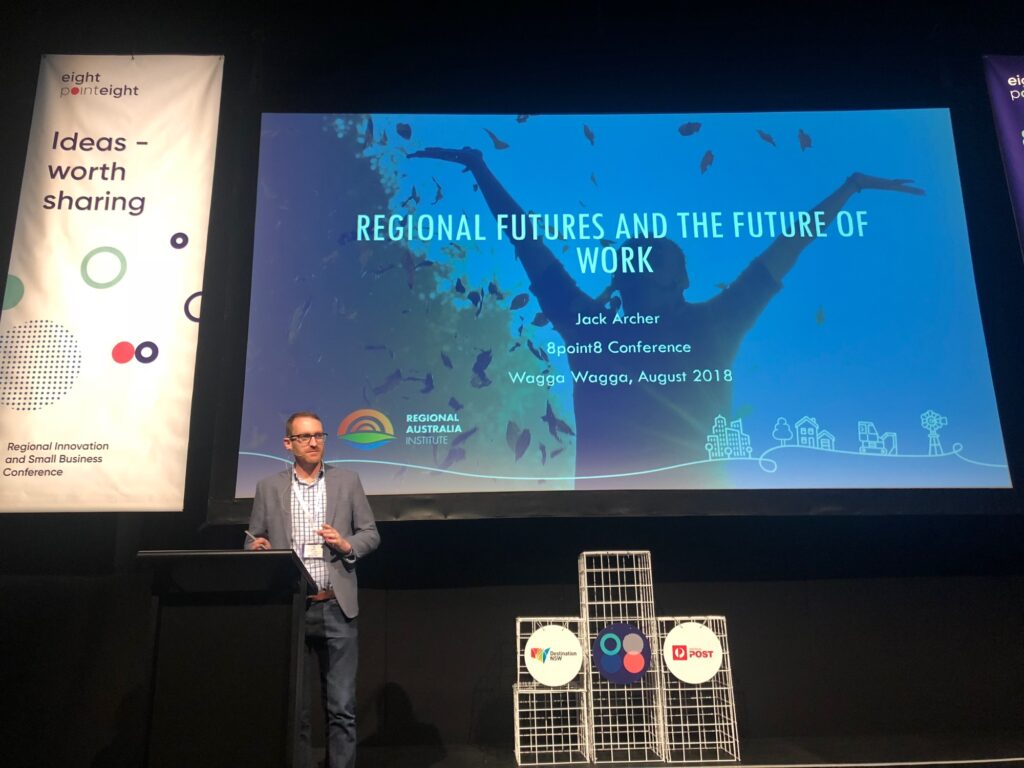
Jack Archer set the stage for regional innovation from a national perspective. A conversation about “regional” entrepreneurship can often feel like a black and white perspective of metro and non-metro. In reality, there is a diversity of regions that require unique perspectives while sharing common challenges of connectivity and growth.
All four region types Jack highlighted have experienced population growth over the past ten years: Regional cities at 7.8%, Connected lifestyle regions at 9.3%, Industry and service hubs at 3.3%, and Heartland regions at 1.6%. These figures are higher or on par with the national average of 1.6%. The continued change in nature of work means a shift from traditional to service employment, even as the rate of increase in job opportunities over the past two years is increasing more rapidly across regional areas over metro opportunities.
These changes require a strategy that can be shared across regional areas:
- Businesses that attract and invest in capital
- Building entrepreneurial, innovation, and creative skills
- Education that helps regions adapt to the future
- Migrants to fit skills and workforce shortages and underpin population growth
Innovation barriers, solutions and priorities in smart regional cities
- Peter Thompson, General Manager, Wagga Wagga City Council
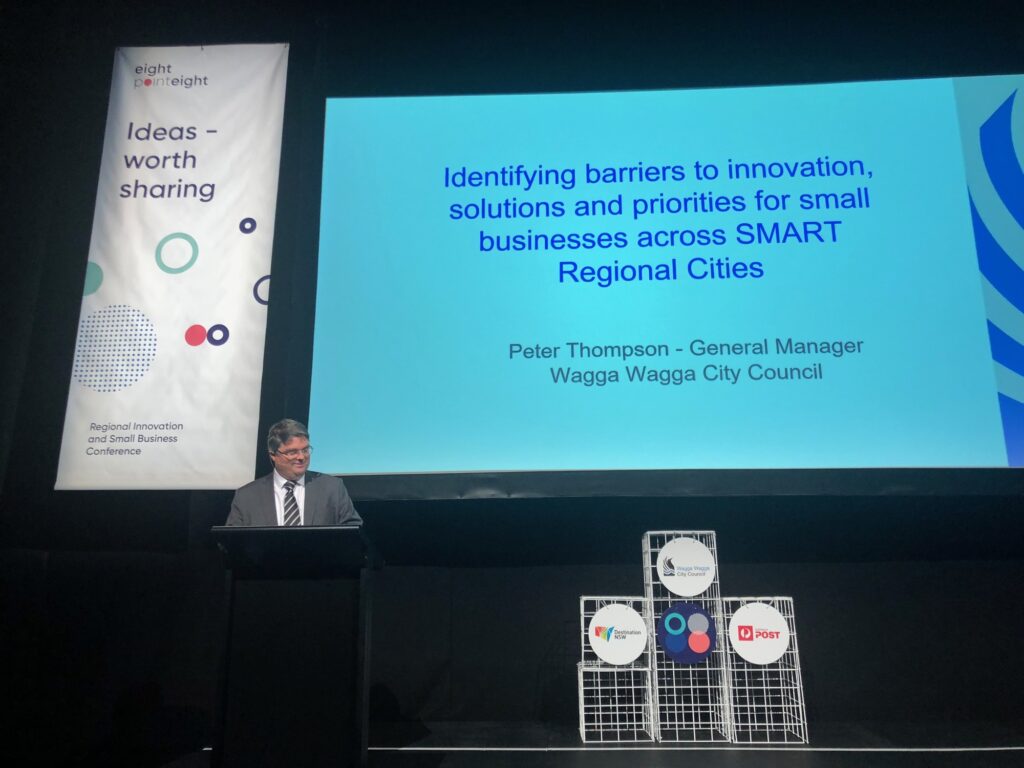
Taking the conversation to a practical perspective, Peter Thompson shared specific stories from practical experience. A main question heading into the breakout sessions was on how regions can support the skills needed for the growth. Small and medium firms represent over 92% of firms in Australia and are the bedrock of large regional cities. With common barriers of access to funds and time, an approach towards driving new economic development requires a strong collaborative approach.
What is coworking, incubation and acceleration?
- Joy Taylor – Community Manager, Canvas Coworking Inc
- David Masefield – CEO & Founder, Startup Toowoomba, Director Canvas Coworking Inc.
- Angie West – Space and Collaboration Lead, Pollinators
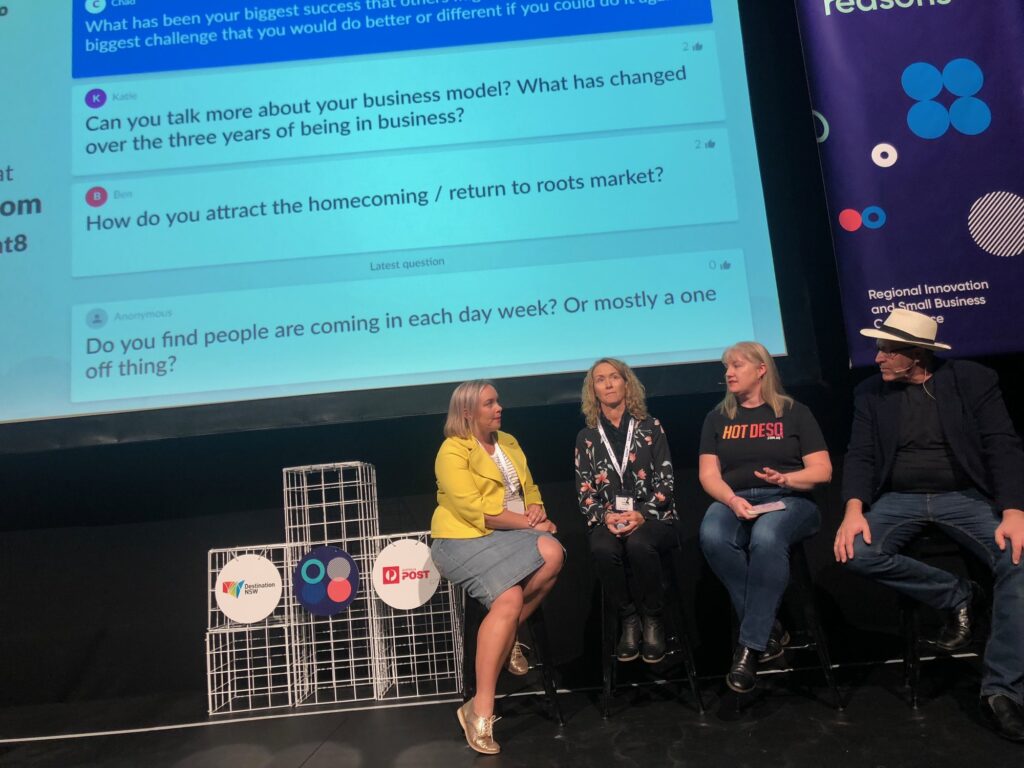
Innovation spaces and hubs and local innovation champions play a key role in this collaboration. Joy Taylor and David Masefield from Toowoomba, Queensland and Angie West from Geraldton, Western Australia shared the inner workings of the business models of independent innovation hubs.
In their presentation, Joy and David emphasised the need to explain what those in the profession may think are basic terms such as coworking and accelerators. Even for those in the ecosystem building space, there is often confusion as to what is actually meant.
A key take away was in their story of the journey to establishing their hub, a story that reflects what could be seen as best practice to build community first over space. They first started with a working group made up of diverse representation in the region. This followed with a series of pop-up spaces in existing locations until they eventually had a strong base for their own physical space. They also started from the beginning asking people to pay to provide the value and demonstrate sustainability.
Still, coworking spaces that support entrepreneurial activities require additional funding outside of member fees. This funding in regional areas often comes from local business sponsorship, local councils, and other grants. The follow on panel with Angie focused on the need for each party in the region to engage with time and finances to get the most of local innovation hubs.
Councils, chambers and initiatives – The role of council in innovation ecosystems
- Dr Stephen Saunders – Section Leader, Industry and Destination Development, Coffs Harbour City Council
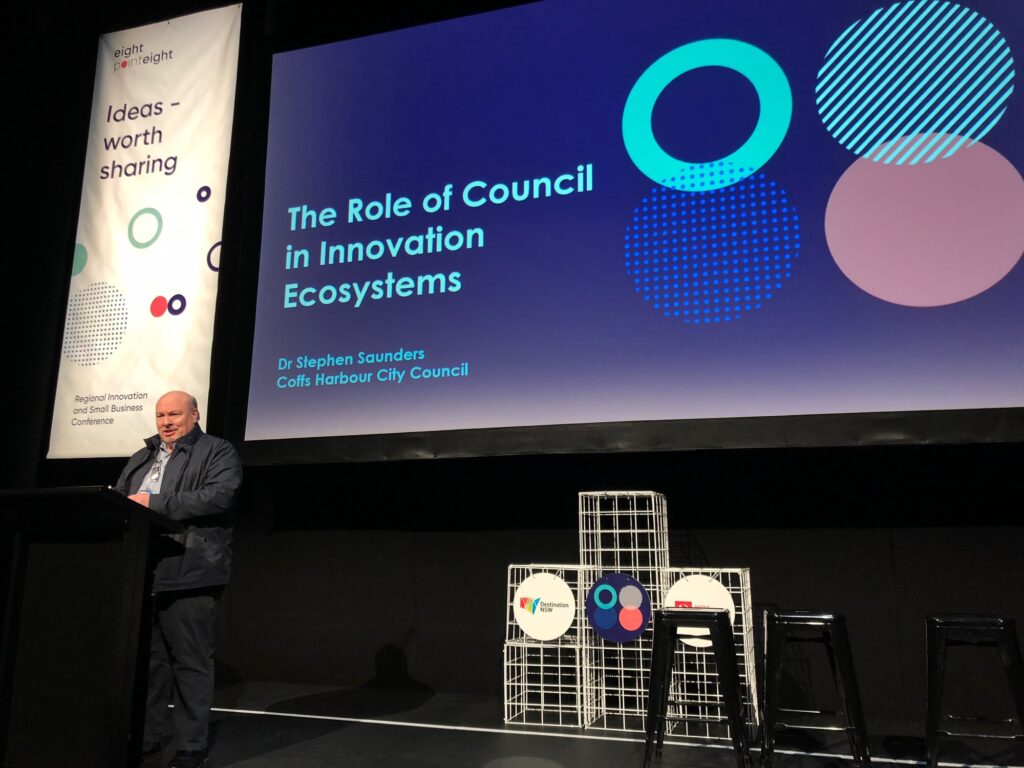
Specific to the role of local council, Dr. Stephen Saunders shared the Coffs Harbour journey towards supporting their local innovation ecosystem. The approach represented an articulation of balancing influence without excessive control as they build their ecosystem. The innovation ecosystem in Coffs Harbour City Council is growing, and they are preparing to roll out the Startup Onramp structured entrepreneur training program.
Innovation ecosystems in regional areas are are an economic development asset. Local governments have an opportunity to lead, participate, and support activities and share in the outcomes.
The role of local council in innovation ecosystems was described to:
- Level the playing field
- Define the rules of the game
- Seed fund the underlying system
- Create the funnel
- Matchmaking
- Cheerleading from the sidelines
These principles lead into lessons learned as the council build their ecosystem:
- Clearly define the economic development strategy
- Recruit passionate talent
- Give innovation leaders the space to weave their magic
- Be collaborative, yet driven
- Focus scarce resources to achieve outcomes
Councils, chambers and initiatives – Evocities: An exploration of collaboration
- Jo Hewitt – A/G Team Leader Economic Development, Albury City; Project Manager, Evocities
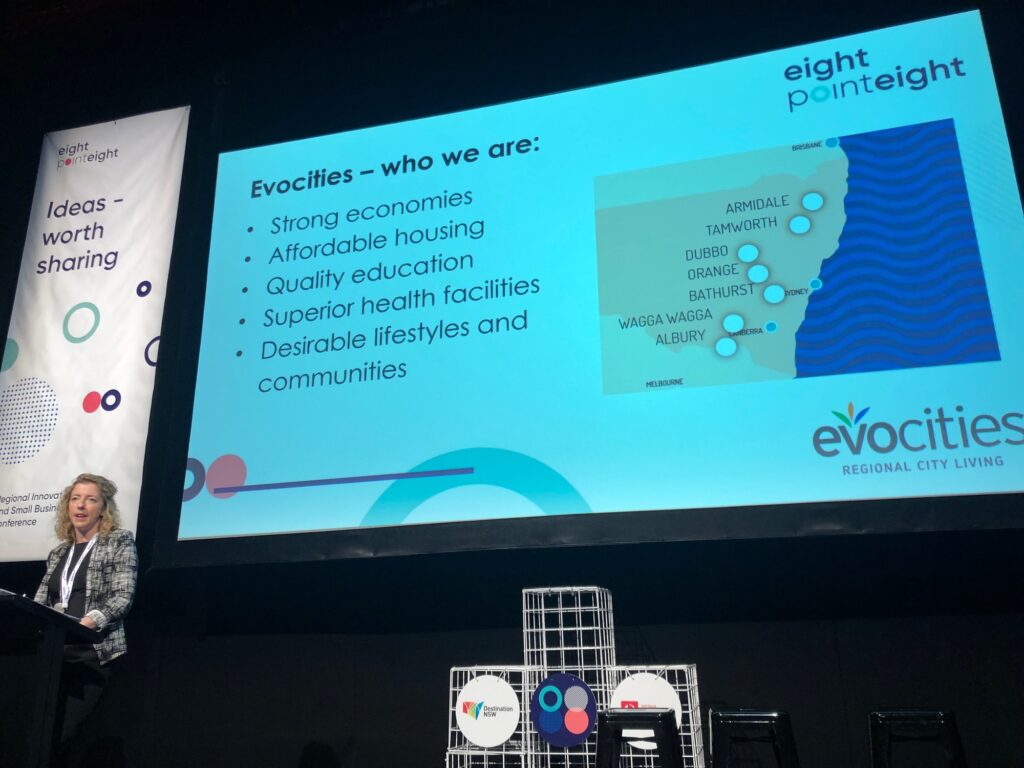
A key theme through the conference was a need for cross-region collaboration to leverage shared resources. The evocities campaign encourages people to move to seven regions in NSW: Armidale, Tamworth, Dubbo, Orange, Bathurst, Wagga Wagga, and Albury. The campaign has supported over 3,500 households moving to the region.
Jo Hewitt highlights a key message for all regions is to frame a move not as a tree-change or sea-change, but as a city-change. Feedback from people who have moved to the regions is that the quality of the schools, properties, and services is more than imagined. The evosities research shows that if people to relocate again after moving to a region, they are more likely to relocate to another non-metro region rather than moving back to a major metro area. The primary concern for people moving is the need for a job, which is why evocities has a jobs board to connect people with opportunities for the seven cities in their portfolio.
Councils, chambers and initiatives – The role of the business chamber in innovation ecosystems
- Katie van den Brand – Vice President, Bunbury Geographe Chamber of Commerce and Industry Regional Innovation Consultant, Maker + Co and Meshpoints
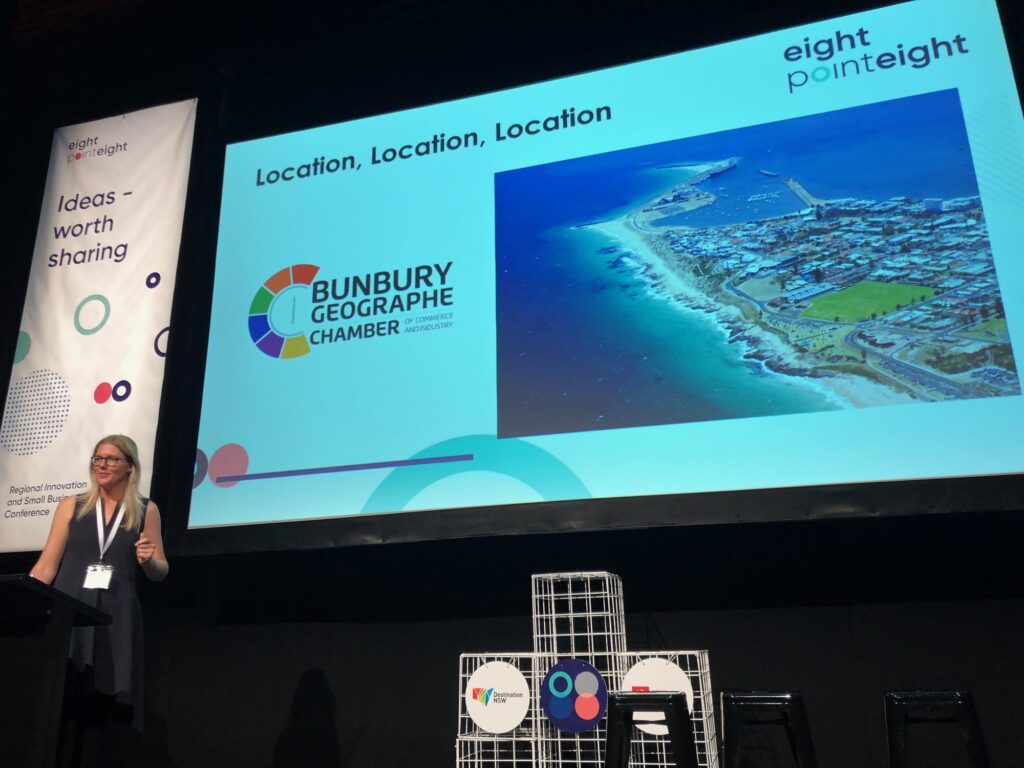
The link to jobs and business opportunities transitioned well into Katie van den Brand’s perspective on the role of the local Chamber of Commerce in innovation ecosystems. The engagement of local Chambers of Commerce with innovation ecosystems can unlock significant opportunities for Chamber members to identify ways to access new technologies and ways of thinking to scale their business, allow new startups and entrepreneurs to tap into local service providers and business mentors, and build business capability and resilience in the region.
A regional example where this is happening in practice includes the East Pilbura Web Business Hub, a collaboration between the Port Hedland Chamber of Commerce, BHP, and the Pilbara Development Commission. Local chambers have an opportunity to sponsor, activate, invest, and network with new business opportunities that are developed out of innovation activities.
Councils, chambers and initiatives – Entrepreneurship is everybody’s business
- Kerry Anderson – Founder, Operation Next Gen
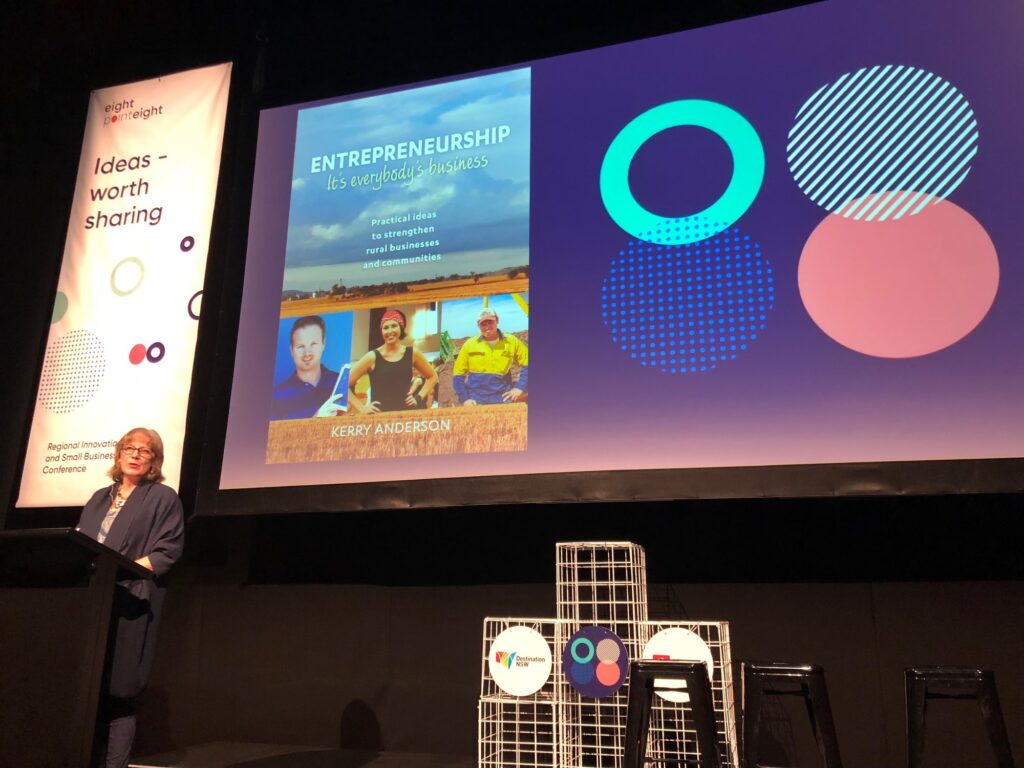
Kerry Anderson followed by highlighting that role of community development in innovation ecosystems. If you have a community where entrepreneurs are valued, you will have a vibrant community. Entrepreneurs play a key role in building community resilience, as they turn problems into opportunities, taking control of their own destiny and in the process their own communities.
When things bad happen, regional communities pull together. We see this often with physical disruption such as fire or floods. But why with market disruptions do we wait until adversity strikes when it comes to building a business? Investment in entrepreneurship mitigates the vulnerability of a community that has all its eggs in one basket.
This involves culture change that can take time and new leadership. Existing leadership allows room for emerging leaders in the community and new leaders from outside the community to make change. A community’s future is shaped by new stories with new people in new places.
We need you! Creating a functional workforce development plan for the Riverina
- Rachel Whiting – Chief Executive Officer and Director of Regional Development, RDA – Riverina
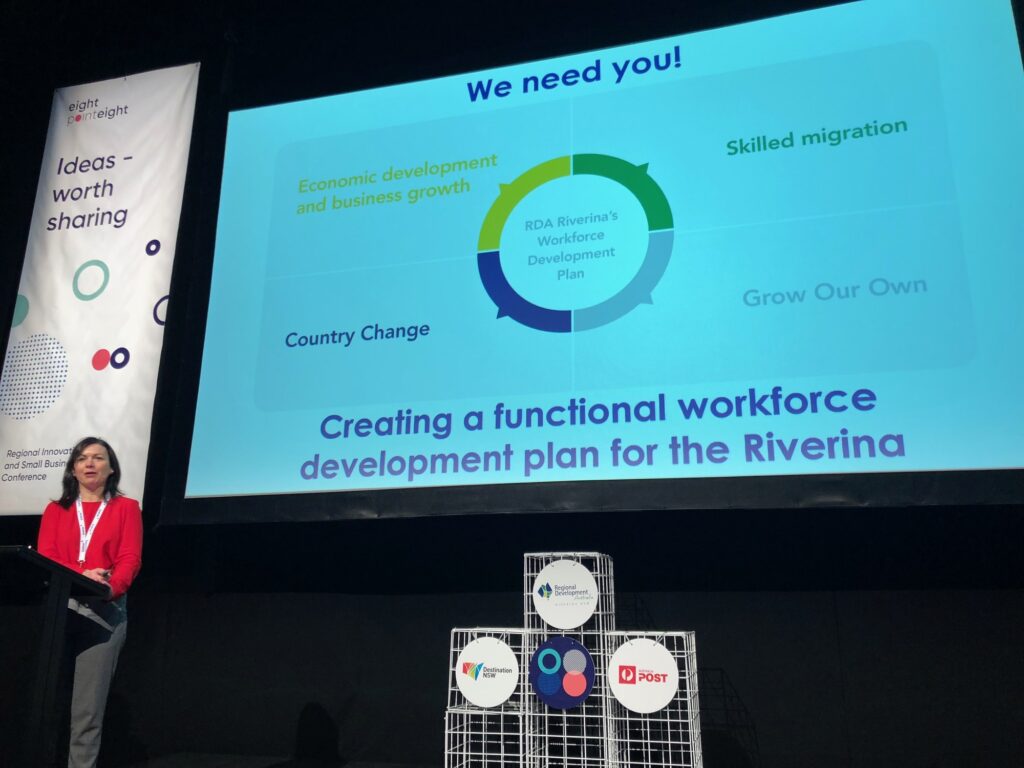
Regional Development Australia has a key role to play in supporting regional innovation ecosystems. This role is outlined in their recent charter to: Engage with regional entrepreneurs and emerging business leaders to explore new opportunities to grow local jobs in their regions.
The Regional Development Australia network is made up of 52 committees that define strategies for their regions. Rachel Whiting outlined the strategy for the Riverina network for addressing the need for 10,000 workers over the next five years: growing their own talent, bringing in skilled migration, retaining local talent, and engaging the unemployed and disengaged. Entrepreneurship plays a key part in each of these areas.
Cut the Commute – VR and AR is offering a rural, regional seat at the table
- Scott O’Brien – CEO & Cofounder, Humense
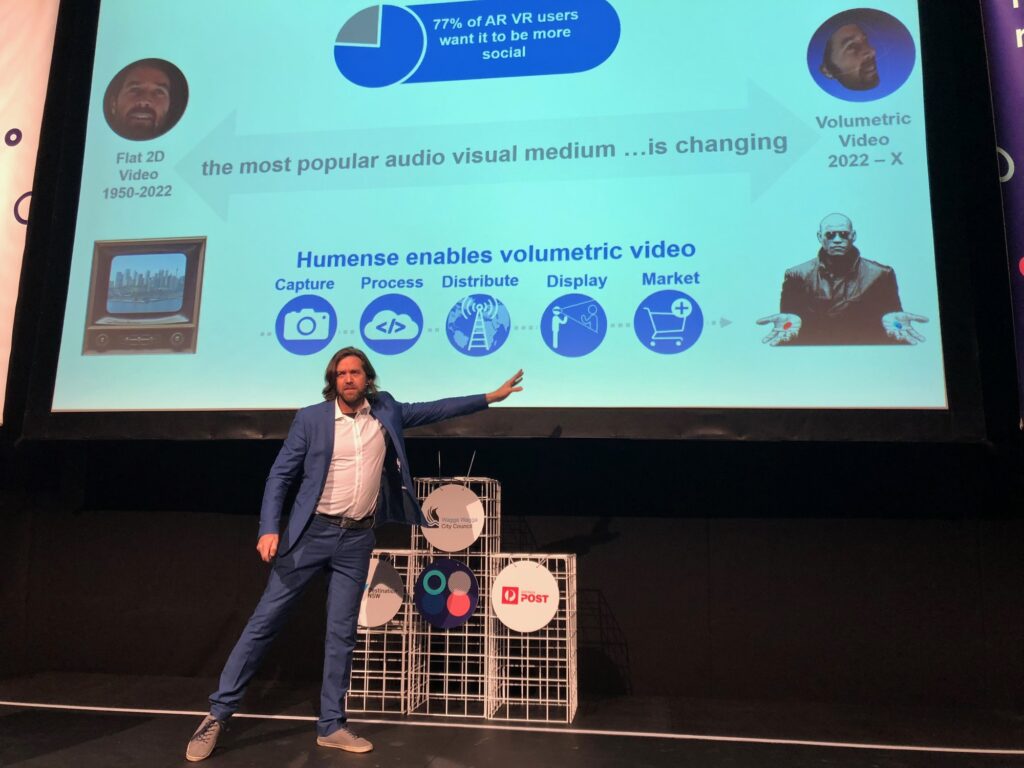
Technology plays a key role in developing innovation ecosystems. In addition to developing local technical talent, opportunities are emerging to use technology to improve communications and connectivity. Humense founder Scott O’Brian presented from a deep commitment to improving the human condition through connectivity.
Scott provided insights into the evolution of human engagement with digital interfaces, bringing us to the current state of virtual and augmented reality. A challenge with regional innovation ecosystems is the lack of density impacting on opportunities and support. Physical human interaction and serendipitous collisions will always be a key characteristic of ecosystems. Advances in VR and AR have potential to reduce barriers and improve connectivity in regions.
Venture capitalist angel investment for the future
- Christine Kaine – Founder, Business Angels
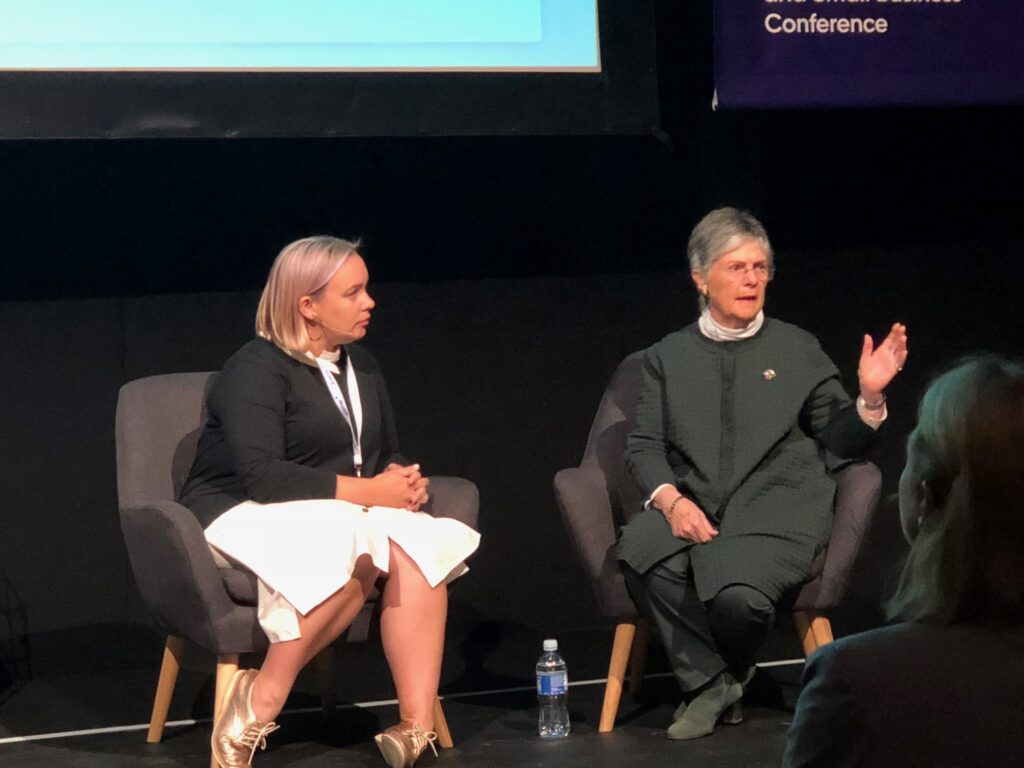
Accessing local investment is critical to fuel regional innovation ecosystems. Christine Kaine shared from a long history of connecting and supporting local angel investors and startups. She highlighted a need for entrepreneurs to be focused on addressing real problems,and to do that there is a need to get in front of real customers. Connecting with investors in regional areas in particular is a matter of personal relationships rather than formal, structured programs. There is a need to bring people on the journey of backing local startups, investing in businesses versus buildings.
I had an opportunity to share in a conversation with Christine, and we spoke about the changes in Angel investing. Like the recent rise in “startup” terminology, the notion of angel investing is not particularly new to regions. It is just that in the past, it was mates supporting mates do cool stuff. The work of people like Christine is critical to connect those with the means and interest to invest with those who are good candidates for investment, educating and preparing each party, and aligning interests and passions.
Universities in the innovation ecosystem
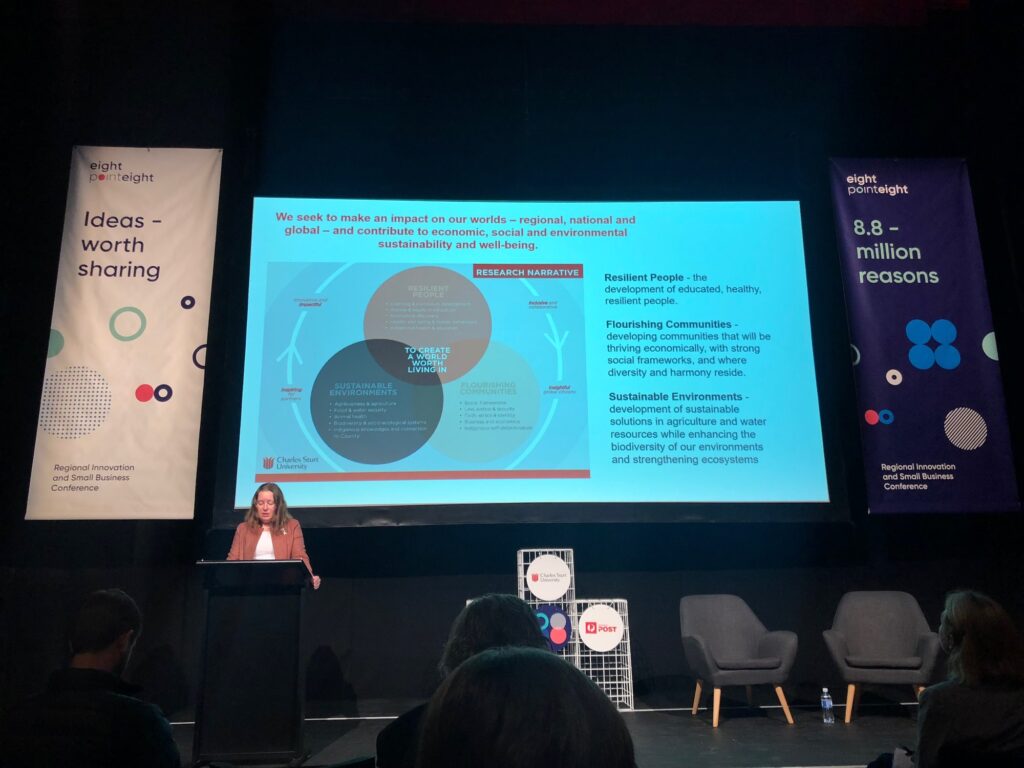
A key role of Universities in regional areas is to skill local talent and support research in areas that are key to regional sectors. CSU Director Laura Dan highlighted Charles Sturt University’s involvement in the local innovation ecosystem through supporting initaitives such as Agripark, thr Agritech Incubator, the Discovery Translation Fund, the Bathurst innovation hub Upstairs, an investment commitment into the Significant Capital Ventures fund, leading the collaborative project CenWest Innovate, and the Walan Mayinygu Indigenous pop-up hub.
Beyond programs, universities operating in regional areas tend to have a strong focus on sustainability and social impact. Laura shared CSU’s mandate to seek to “make an impact on our worlds – regional, national, and global – and contribute to social, economic, and environmental sustainability and well-being”.
How the use of the internet will impact the future of work
- Amber Dornbusch – Head of nbn™ local NSW, ACT, NBN Co.
- Craig Murphy – Cloud Advocate Leader | Developers, Startups – A/NZ, IBM
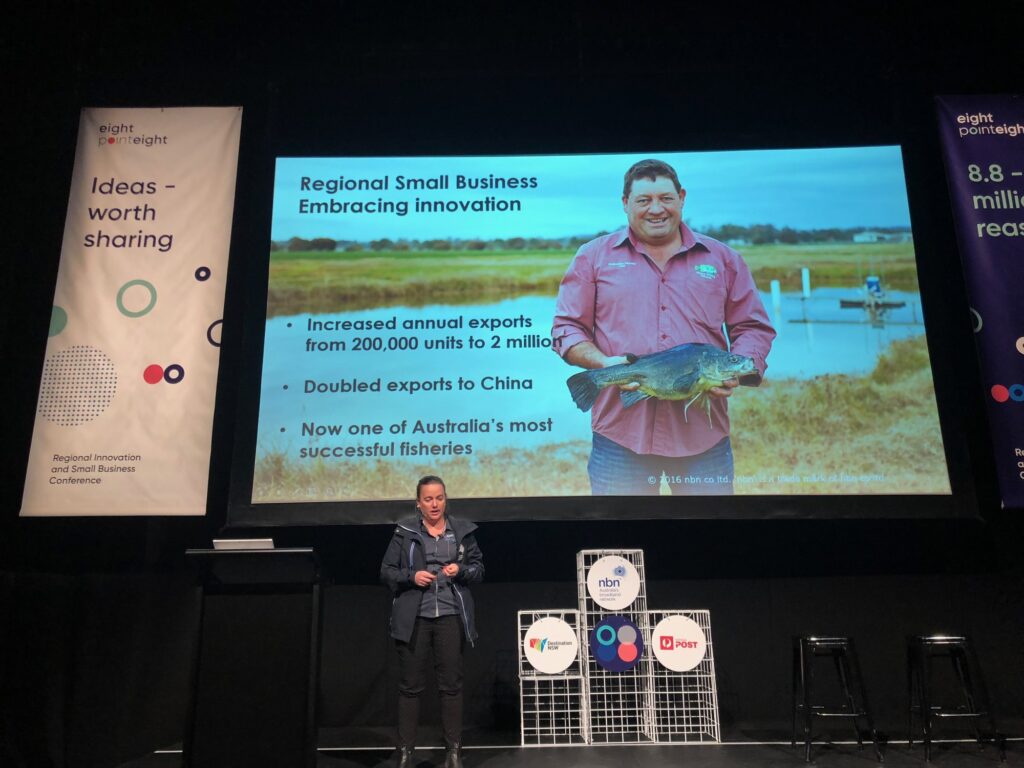
Digital infrastructure is critical to regional innovation. Amber Dornbusch from NBN shared about the impact that high speed internet access has on regional entrepreneurs. Amber was later joined in a panel by Craig Murphy from IBM to unpack the challenges and opportunities with enabling internet access in a regionally diverse landscape of Australia. Technical details were discussed such as diversity of approaches, related costs, and the impact of advancing technologies such as 5G.
I had a conversation with Craig following the session on whether internet infrastructure is positioned as a cost of doing business or a matter of life and death such as food distribution or water. Reliable, high speed internet has now become a minimum requirement for entrepreneurs looking to access the necessary scale to global markets.
Mobilising the night time economy in your town / city
- Harumi Arrascue-Watanabe – Night Time City Project Manager, City of Sydney
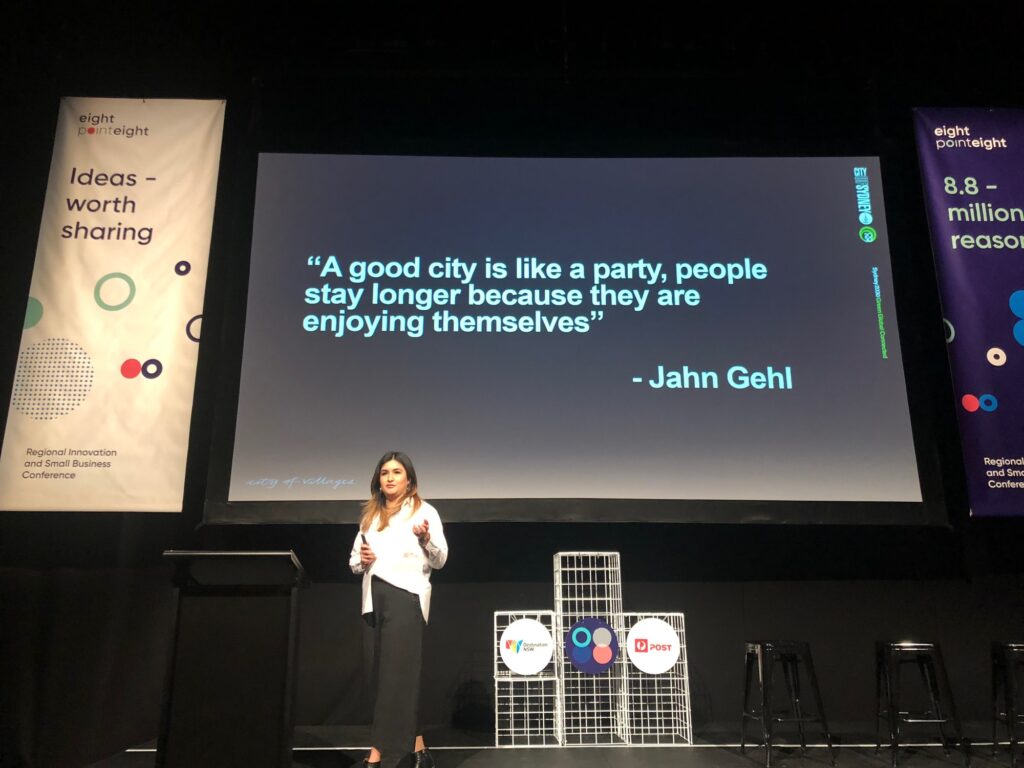
An aspect of innovation ecosystems that is often overlooked is the livability of a city. The local coffee shops, open spaces, entertainment, and culture is as important to entrepreneurs as the technical support for their businesses.
Harumi Arrascue-Watanabe shared about the transformation that happened when Sydney focused on transforming their night time economy. A key to the success from changing from a negative and narrow perspective such as “How do we fix alcohol-related violence?” to a more open question “What do we want from our city at night?”
These questions resulted in transformations in commerce opportunities, night time art, and more. Outcomes include alcohol-related violence reduced 6% in five years, over 35,500 people are employed in the night time economy, 26% of establishments open after 6pm are shops, and 81% of the population feels safe or unconcerned at night.
Activating vacant spaces across your town/city
- Christopher Saunders – General Manager, Renew Newcastle
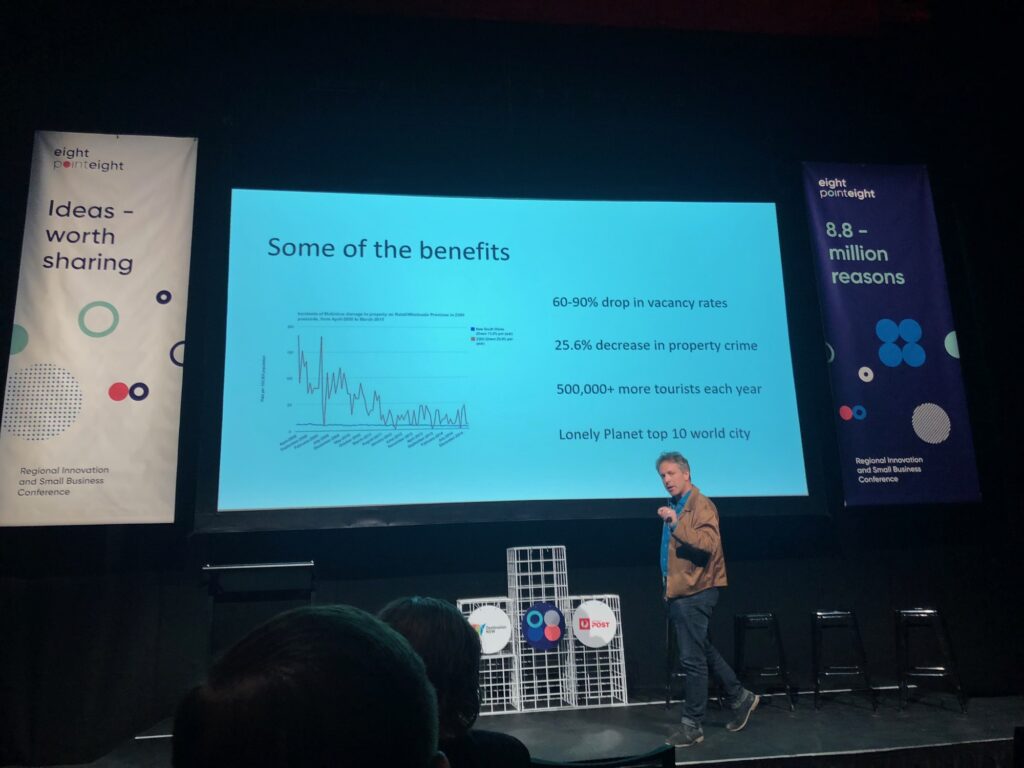
Most entrepreneurial initiatives are birthed from ambitious grassroots leaders recognising the local need. Renew Newcastle is a national highlight of how a region can be transformed through new ways of thinking. The project transformed empty shops into commercial opportunities for the creative sector.
General Manager Christopher Saunders shared how Renew Newcastle supports entrepreneurs to borrow empty properties on 30 day license agreements. The project is based on questions applicable to all entrepreneurs: “What can we make easy?” and “What don’t we need permission for?” The answer applied to vacant real estate resulted in a 60% to 90% drop in vacancy rates, over 25% decrease in property crime, an increase of over a half million tourists per year, and a top 10 ranking on Lonely Planet.
The returns on the local economy from the Renew Newcastle project are significant. For every $1 invested in Renew Newcastle, $14.40 is returned to Newcastle. Creative industries participating in the Renew initiative generated over $3 million to the local economy in 2016.
Where to from here?
- Dianna Somerville – The Regional Entrepreneur
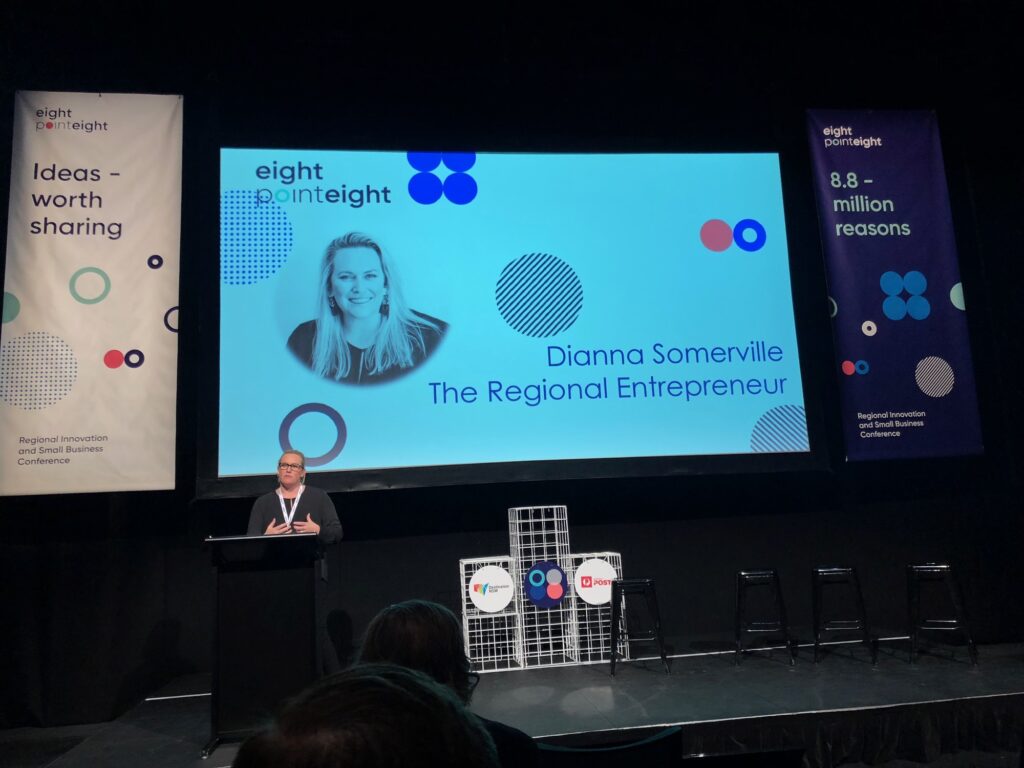
When thinking about innovation ecosystems across regional Australia, there is always the names of a few people in each region that come to mind. Building innovation ecosystem requires work outside the normal day job, someone to see the need and go above and beyond to build the support for local entrepreneurs. Dianne Sommerville is one of those names, as founder of the AusPost Regional Pitchfest, founder of the 8point8 conference, and leader in the local ecosystem along with Simone Eyles.
The inaugural 8point8 conference brought each aspect of a regional innovation ecosystem together to build capability and capacity. It was a great start. I believe there needs to be a wider conference for innovation ecosystem leaders, bringing together regions and metro areas, a focus on industry sectors, and all roles in the ecosystem.
I look forward to ongoing advances in approaches to building entrepreneurial capability and capacity in innovation ecosystems across Australia.

